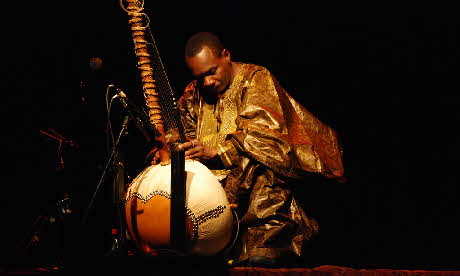
We've unearthed five obscure musical instruments from around the world and slipped one in you might be more familiar with
Three musical styles dominate the islands of Cape Verde, of which, the funaná is the most upbeat and dynamic. It originates from Santiago island and is driven by the rhythms of an instrument called a ferrinho. Usually it's accompanied melodically by an accordion called a gaita. A simple iron scraper, or idiophone, the ferrinho traditionally defines the pace and aesthetic of funaná but is often replaced by other percussion by modern musicians.
Below is a recording of Cape Verdean musician Mayra Andrade performing her song 'Tunuka' with Brazilian singer Mariana Aydar. The pair accompany themselves with the ferrinho and a triangle.
Originating in ancient China, but now primarily associated with Japan and Zen Buddhism, the shakuhachi flute is a traditionally made from a length of bamboo. Sound is created by blowing across the top of the pipe and is thought to be quite meditative.
A popular component of traditional Japanese music, the shakuhachi has also been used in jazz, folk and film music.
The biram is a five-stringed harp native to the Boudouma tribe of fishing nomads living by Lake Tchad in Niger. It is a holy instrument and can only be played by initiated masters. It has fallen out of favour with the youth and only one master remains: Malam Mamane Barka. Barka is honouring the wishes of his late teacher who asked him to talk about the biram wherever he could, spreading its music around the world. Catch Barka on one of his visits to the UK or hear the biram in action here.
The Persian tar is a type of fretted lute typical of Persian classical music. The word 'tar' originates from the Sanskrit word 'tarah' and is thought to be the root of names for other instruments like the guitar and Indian sitar. With a double-bowl shaped resonator carved out of wood and covered with stretched lambskin, the tar is plucked like many other lutes the world over.
In its present form, the Persian tar has been around since the 18th century and is now the choice instrument of Persian classical music masters.
The calliope is traditionally a steam-run whistling instrument that was developed in 1855 by Joshua Stoddard. He intended it to be used as a church instrument but it was taken on by the circus and steam boats of the paddle-wheel era on the Lower Mississippi River. By no means a subtle instrument, the calliope cannot vary its volume and is controlled mechanically or via a keyboard. The calliope made a guest appearance in The Beatles' song 'Being for the Benefit of Mr Kite', so next time you're listing to the legendary band, listen out for this instrument.
The kora originated in The Gambia and has become popular all over West Africa, but is now best known for its Malian musical exponents. It is a 21-stringed harp traditionally played by griots, members of a hereditary caste of praise-singers and historians. The instrument is constructed from half a calabash gourd covered in stretched skin. The strings sit in two parallel rows reaching up the vertical neck.
Traditionally the harp was tuned using leather tuning rings that can be moved up and down; however, in recent years koras with guitar machine heads have become more popular because they are easier to tune.
Kora maistro Toumani Diabate comes from Mali and has seen success the world over with his virtuosic kora playing. Here he's playing 'Cantalowes' from the album The Mandé Variations.
Queen's Jubilee song features musicians from all over the world | Inspire me... More
5 fantastical film set substitutes | Inspire me... More
11 things to hear before you die | Inspire me... More
Rainforest World Music Festival, Borneo | myWanderlust... More
India's fortress of folk | Blogs... More